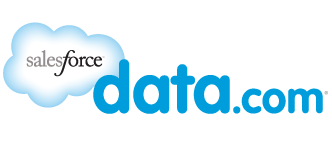
Get your FREE 30-day trial.
Please complete all fields.
The social revolution is changing our world. Our customers are social. Our prospects are social. Even our employees are social. But our companies are struggling to keep up with this revolution. As marketers we're still tasked with driving demand, still accountable for our numbers. But we aren't speaking in the customer's social language yet. We're missing a tremendous opportunity to use social media to drive demand. Just having a Twitter account doesn't solve it.
Luckily there are steps you can take and products--like Radian6, Siteforce, Data.com--that help you listen to what customers are saying without blowing up your current pipegen.
1. Listen to your customers to define your targets
What are they saying? What are they struggling with? The beauty of social media is you can hear what customers and prospects are saying about you, your competition, and the industry as a whole. Listening to your customers and prospects will help you decide which areas to focus on.
It's impossible to listen to everything people are saying on social media. So start with 3-4 key things you really want insight on and focus on them. You can always change what you watch as needed, but being focused on a few areas of conversation lets you stay involved without drowning in a flood of information.
2. Segment customers based on the desired conversation
You've probably heard it before, but it's worth repeating: the era of the 'one size fits all' marketing message is over.
Listening to what customers are talking about gives us the opportunity to segment customers in a way that’s far more insightful than traditional demographics. Our customers and prospects already filter out what they don't want to hear. Listen to what they’re interested in and give them less to filter out. In other words, you can engage in the conversations they want, and say what you need to say in a way that’s natural and relevant to the discussion.
3. Design offers that maximize mini-decision making
We can measure so much, from open rates to click-throughs to form completes, and as marketers we're held accountable for hitting our numbers. To design offers that work, we need to look at them from the customer's perspective. First listen to what customers are talking about and then make offers that keep that conversation going--while taking them on a journey.
The customer doesn't know what you want them to do. You need to lead them each step of the way. As you're designing an offer, consider each point in the text where the reader makes a decision to keep reading. Here's an example:

4. Engage your audience using clean and complete data
This one is near and dear to my heart. If you think about how many people you know who have been promoted and changed jobs recently, it shouldn't be surprising that 70% of business contact data goes bad within a year. For example, if you buy a marketing list now and try to use that same list in a year, you can expect that 70% of the people aren't going to get your message. Not a very effective use of your time or money. Make sure you have the most up to date data for your marketing campaigns.
5. Flirt with your prospects using engaging content
In this social world, we need to nurture prospects gently. In the same way you wouldn't want to propose marriage on the first date, you need to help your prospects get to know you and your products first. So what's the best way to do this? Slowly and in a way that makes them care. Educating on topics that matter to them can be an extremely effective approach.
I know it's hard to create all that content. Infographics, tweets, blogs, podcasts, etc. all take time, energy, and money. So, where do you start? What do you create? I've found the best approach is to look at what your audience is sharing. The content they're sharing is usually the most interesting and relevant to them. Once you've chosen your segments, look at what content drives the most interest in each segment. This will give you a great blueprint for creating more effective content.
What other steps have you taken to drive demand in this social world?
Let us know in the comments below or
Tweet to @datadotcom
 Data.com helps you engage with your audience using clean and complete data. Check us out:
Data.com helps you engage with your audience using clean and complete data. Check us out: